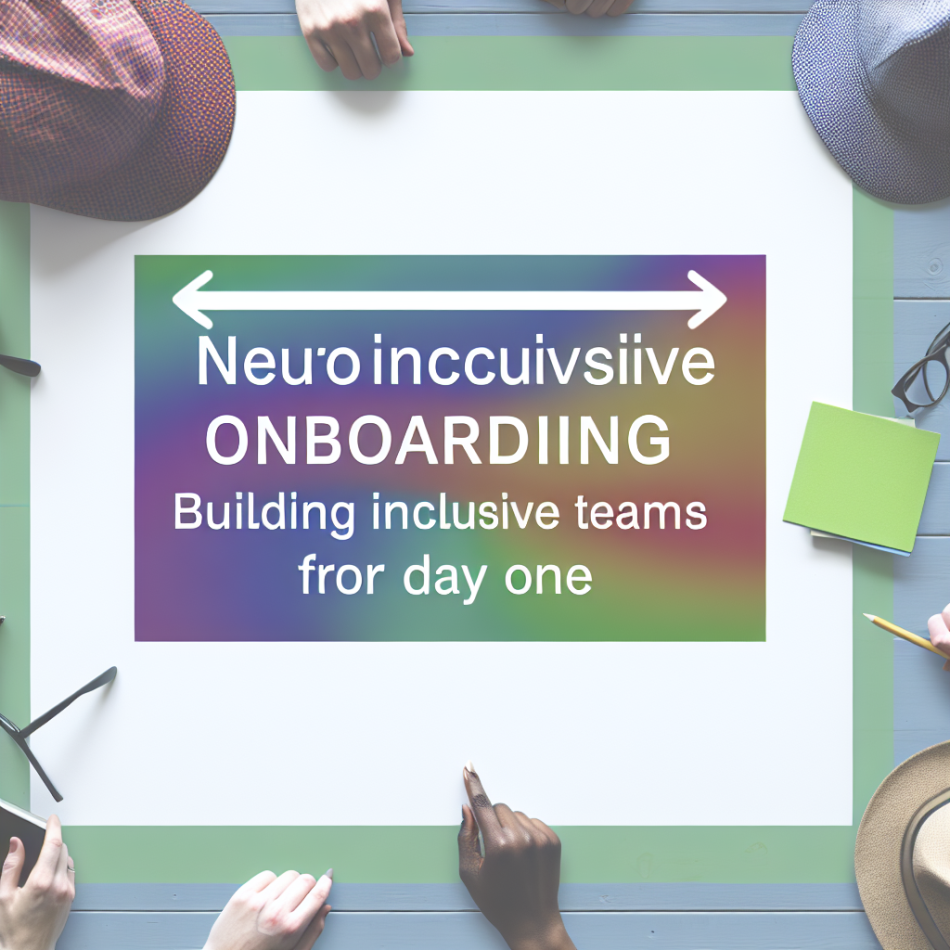Building a Neuroinclusive Team Starts with Onboarding
Creating a workplace where neurodivergent individuals thrive begins long before day one. Onboarding sets the tone for psychological safety, belonging, and productivity. By prioritising clarity, flexibility, and choice from the outset, organisations can dismantle barriers and foster an environment where every team member—regardless of cognitive style—feels valued and understood. This article explores how intentional onboarding practices lay the groundwork for sustainable neuroinclusion.
The Critical Role of Onboarding in Neuroinclusion
Traditional onboarding often assumes a one-size-fits-all approach, which risks alienating neurodivergent employees. For individuals with autism, ADHD, dyslexia, or other neurological differences, unclear instructions, sensory overload, or rigid processes can trigger anxiety and disengagement. Neuroinclusive onboarding, however, acknowledges diverse needs upfront. It establishes trust by reducing ambiguity, offering adaptability, and empowering individuals to navigate their roles in ways that align with their strengths. This proactive approach not only improves retention but also signals a company’s commitment to equity.
Clarity: The Foundation of Trust and Understanding
Neurodivergent individuals often thrive in environments where expectations are explicit. Ambiguity in job descriptions, performance metrics, or workplace norms can create unnecessary stress. To build clarity:
- Provide written and visual guides for tasks, avoiding jargon or vague language.
- Outline daily routines, including break schedules and communication protocols.
- Specify deadlines and priorities clearly, avoiding assumptions about “common knowledge”.
For example, instead of stating, “Respond to emails promptly,” define response windows (e.g., “Aim to reply within 24 hours”). This reduces anxiety and ensures everyone shares the same benchmarks for success.
Flexibility: Adapting Processes to Empower Individuals
Rigid structures—such as fixed training hours or mandatory group activities—can exclude those who require alternative approaches. Flexibility demonstrates respect for neurodiverse needs. Consider:
- Offering staggered start times or remote onboarding for those sensitive to sensory stimuli.
- Allowing self-paced learning modules instead of time-bound workshops.
- Providing multiple formats for feedback (written, verbal, or visual).
Avoid equating flexibility with leniency. Instead, frame it as a strategic tool to unlock potential. For instance, an employee with ADHD might excel with task variety, while an autistic colleague may prefer structured, predictable workflows.
Options: Personalising the Experience
Choice is a cornerstone of neuroinclusion. Presenting options during onboarding acknowledges that there’s no single “right” way to learn or contribute. Practical steps include:
- Letting new hires choose between shadowing a colleague or reviewing recorded demonstrations.
- Offering workspace adjustments (e.g., noise-cancelling headphones, adjustable lighting).
- Providing multiple communication channels (Slack, email, or face-to-face).
This autonomy fosters confidence and allows individuals to advocate for their needs early. Importantly, options should be presented as standard practice—not exceptions—to avoid stigmatisation.
Building Connections Through Inclusive Communication
Effective communication bridges gaps between neurodivergent and neurotypical team members. During onboarding, normalise differences by:
- Training managers on neurodiversity-aware communication styles (e.g., direct vs. indirect feedback).
- Creating mentorship pairings based on shared interests rather than seniority alone.
- Encouraging self-advocacy by inviting new hires to share preferred working styles.
Transparency about communication preferences reduces misunderstandings. For example, an employee might clarify, “I process verbal instructions slowly—could you send follow-up notes after meetings?”
Sustaining Neuroinclusion Beyond Onboarding
While onboarding is pivotal, neuroinclusion requires ongoing effort. Regular check-ins, adaptive performance reviews, and continuous education ensure long-term support. Encourage teams to:
- Revisit accommodations as roles evolve.
- Celebrate neurodiversity through awareness workshops or guest speakers.
- Foster peer support networks to sustain psychological safety.
Remember, inclusion isn’t a checklist but a culture. By embedding neurodiversity into everyday practices—starting with onboarding—companies cultivate innovation, loyalty, and a truly equitable workplace.
Conclusion: Onboarding as the Gateway to Belonging
Neuroinclusive onboarding isn’t about special treatment—it’s about designing processes that respect human diversity. Clarity, flexibility, and choice create a foundation where all employees, neurodivergent or neurotypical, can excel. By addressing individual needs from day one, organisations signal that difference is an asset, not a hurdle. The result? Teams that are not only productive but authentically inclusive, where every member feels safe to contribute their unique perspective.
